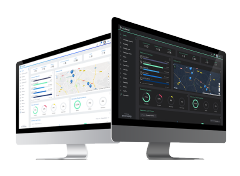
Hydrogen, the future fuel?
Electric vehicle | Sustainability | Trending newsHydrogen and electric vehicle. Do you believe that hydrogen fuel cell car will become electric car great competitor? Let’s talk about it!
Do you believe that hydrogen will be the future fuel and will become electric vehicle great competitor, that both will be necessary elements to promote 100% sustainable mobility or simply that it has no future?
Well, given this wide variety of opinions and faced with lack of awareness about the advantages offered by this technology, we’ll try to discover how it could fit with electric mobility.
What’s hydrogen?
Hydrogen (H) is the lightest chemical element in periodic table and the most abundant in the universe (around 75%), but its pure obtaining is somewhat complex. It’s a colorless, odorless and flammable gas.
Flammable? Boom! Alarms go on. Don’t panic! Do you remember gasoline is also highly flammable and the major part of our vehicles are powered by this type of fuel? Well, let’s continue.
Hydrogen can be produced both through renewable energies and non-renewable ones, just like electricity. The success key will be producing it through renewables, especially through processes such as hydrolysis or electrolysis.
In this way, it would allow reducing greenhouse gases emissions and avoid emitting any other type of polluting gas, expelling only water vapor.
What does it offer?
Nowadays, electric cars autonomy and their charging time are still barriers to promote the real push towards electric mobility. Well, hydrogen aims to be a possible solution to this problem. And not only this, it aims offering a solution to the electrification that is about to arrive.
That is, hydrogen would be a resource facing the imminent electric vehicles and charging network expansion and the consequent demand increase over the electricity grid.
To give us an idea, only in United Kingdom, the future electric vehicles fleet could mean more than a 20GW increase in peak electricity demand. Hydrogen would be a solution facing possible increases that may saturate the network. However, with electric vehicles we can apply smart charging functionality, which allows managing data and information between vehicles and its charging points correctly in order to optimize energy consumption and thus avoid demand peaks. So the key will be managing this demand intelligently.
Which are its advantages?
On the one hand, hydrogen would allow using the surplus of renewable energy. Wind plants, for example, stop when we're not consuming the energy they generate since they don’t have batteries or storage tanks (due to their high prices). However, hydrogen is a gas that can be stored indefinitely, and if that unused energy was invested in producing hydrogen, wind plants would still be much more efficient.
Nonetheless, when vehicles fleet become mainly electric and their charging become smart, it won’t be necessary stopping wind plants since there will always be vehicles connected in the grid taking advantage of this surplus energy.
On the other hand, hydrogen could be a viable energy source in countries and cities where not all electric vehicles owners can have a garage and, consequently, their own plug. Well, hydrogen allows a number of advantages that we should consider:
It can be generated by renewable energy.
It can be used by fuel cells (electrochemical devices which transform chemical energy into electricity) to generate electricity without emitting polluting gases.
It can store renewable energy using fuel cells.
It allows greater autonomies (around 600km, very similar to combustion vehicles) compared to current electric vehicles, which have around 400km of autonomy (except Tesla's long-range models, which exceed even 800km).
It allows charging in only 4 or 5 minutes, equivalent to conventional refueling.
How does it works?
Refueling a hydrogen vehicle is very similar to refueling a combustion one. The tank is filled by a hose that comes from a hydrogen tank. The procedure is the following one:
The hydrogen tank injects hydrogen gas mixed with oxygen into the vehicle fuel cell.
The resulting electrochemical process generates electricity and water.
Electricity is stored in the vehicle's batteries to propel the motor.
Water, in vaporous mode, is expelled through the exhaust pipe when the vehicle is propelled.
Therefore, we can say that hydrogen powered cars mechanics are a little bit more complex than the electric car since it must have a propellant, a fuel cell and batteries, which means that maintenance will also vary.
And how does hydrogen fit with electric mobility?
Through fuel cells, hydrogen could be a real alternative to possible demand peaks saturating the power grid. Thanks to the fact that hydrogen can be stored, a hydrogen power station would not strictly need to be connected to the electricity grid, thus facilitating charging in areas of difficult access to the grid.
So a properly adapted hydrogen power station could charge both an electric vehicle, since the fuel cell would inject electricity into the car's battery; and a hydrogen vehicle, injecting gas directly into the vehicle tank.
Which brands bet on this technology?
Currently in the market there are different brands which are betting on hydrogen powered cars. Toyota with its Mirai, Honda with its Clarity Fuel Cell, Hyundai with its Nexo and Audi with its h-tron quattro, join energy companies such as Repsol, Enagás and Gasunie that support this technology.
Mercedes has done one step further by offering its GLC F-Cell, a plug-in hybrid based on two clean energy sources: hydrogen and electricity. Without any doubt, the first world vehicle edition that combines both technologies. Will it mean a before and an after in sustainable mobility?
Toyota, besides starting series production of the first hydrogen-based vehicle, has also decided to bet on this technology. TME (Toyota Motor Europe) together with DIFFER (Dutch Institute for Fundamental Energy Research) are carrying out an innovative and pioneering project in the market in which it’s possible to produce hydrogen directly through wet air.
By a photo-electrochemical device in contact with air and exposed to sunlight it’s possible to produce this type of fuel without generating any waste. The first prototype, which is still in an experimental phase, obtained a surprising 70% performance and next steps are focused on optimizing the device structure and its efficiency.
Where can we refuel a hydrogen vehicle?
In Germany or California there are already half a hundred hydrogen power stations, in United Kingdom about 20, in France a about 15 and in Spain half a dozen (located in Seville, Huesca, Albacete, Zaragoza and Ciudad Real). In addition, Japan has stated that its main source of energy will be hydrogen. And countries like Norway, Belgium, Italy and United Kingdom include this technology in their future mobility plans.
In fact, there is a European project, the Hydrogen Mobility Europe (H2ME), which is intended to develop the first European network of hydroelectric plants, in order to expand the hydrogen-powered car park and promote the production techniques of this material.
Disadvantages
The main disadvantage is the high investment that involves both obtaining hydrogen and installing and maintaining a hydrogen station, since we are talking about a price range between 500,000 and one million euros (a similar cost than a conventional gas station), compared to the € 50,000 which can cost any charging station.
And another main disadvantage is hydrogen price, since in Germany it stands at € 10 per kilo. If a diesel spends € 0.15 / km, a hydrogen car would spend around € 0.20 / km.
If we add the fact that users will rarely be able to have hydrogen where they usually park their vehicle, for the moment it seems that hydrogen fuel cell car has everything to lose in front of electric vehicle batteries. However, it may have a future in heavy transport, spaceflight propulsion and energy storage. But there is still a long way to go since much research is needed on how to obtain and transport this technology (for example, taking advantage of existing natural gas lines) efficiently and in a safety mode and also investing in creating a powerful distribution network.
What is clear is that hydrogen could help achieving the limits stipulated in Paris Agreement of 2015 and in COP25 of Madrid in 2019 and contribute to greatly reduce the planet's pollutant emissions, but are we really prepared to use this technology?
🚙 And how can Place to Plug help pushing on electric mobility?
Offering an end to end solution for the entire EV charging industry, whether if you are an EV driver, a developer, a business or an institution!



Leave a comment
Comments ( 1 )
As per study added by Value Market Research, the Global Fuel Cell Market was valued at USD 7 billion in 2017 and is likely to reach USD 16.64 billion by 2024 with the CAGR of 10%. A fuel cell is a device which produces electrical energy through a chemical reaction with oxygen or other oxidizing agents within it.Growing environmental concern coupled with the strict regulation in order to reduce carbon footprint is likely to upsurge the demand for fuel cell over the forecast period.See More @ https://www.valuemarketresearch.com/report/fuel-cell-market